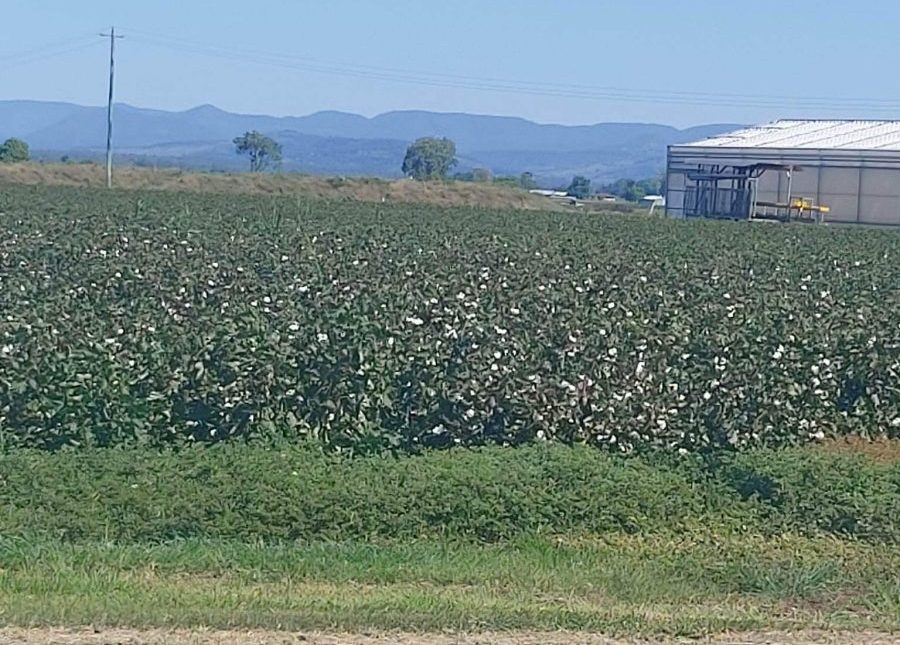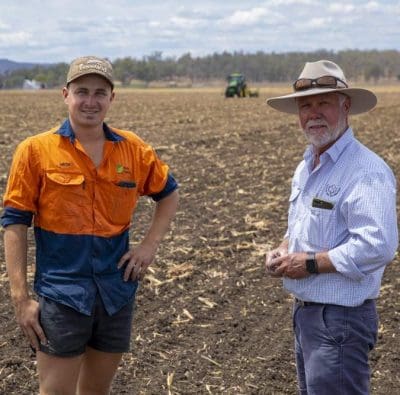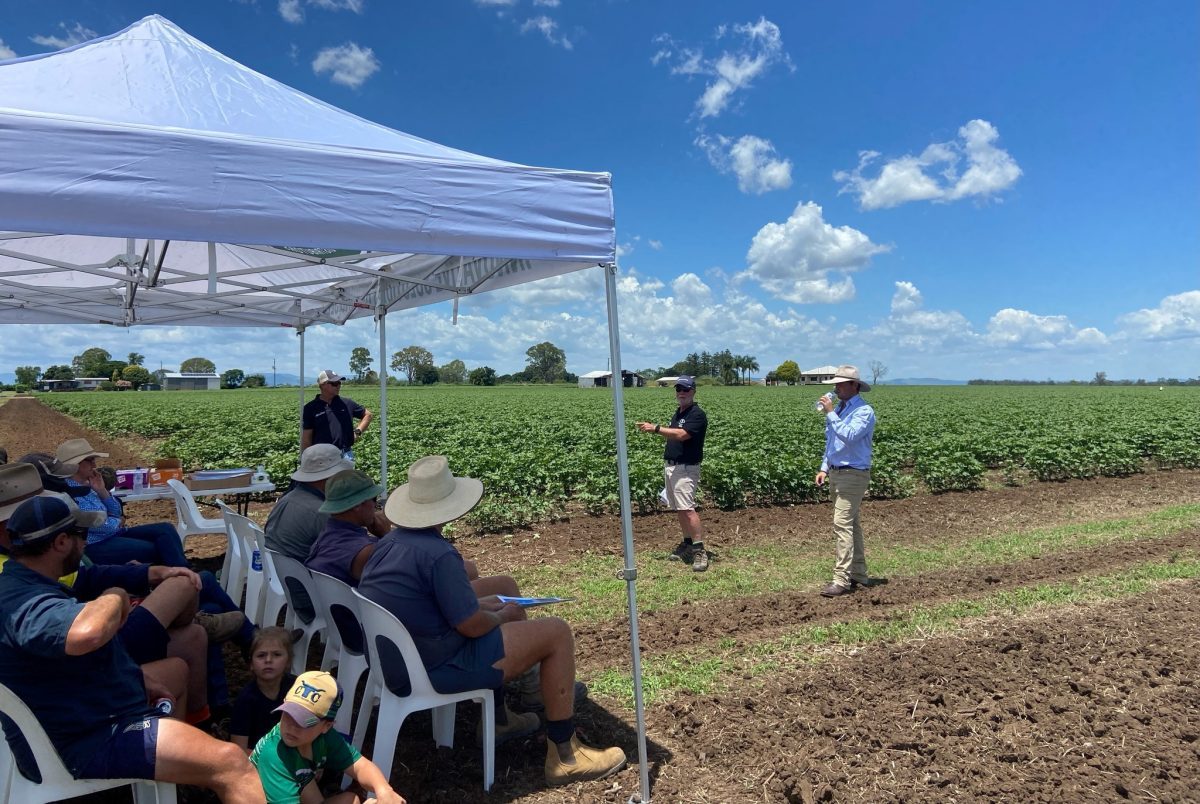
IN LESS than a week, growers in south-east Queensland’s Lockyer Valley will be harvesting their third crop for the century to date as alternatives are sort in this key vegetable-growing region.
Cotton was a more common crop in the Lockyer Valley until the 1990s, when Helicoverpa and other pests made the crop unsustainable, and growers capitalised on their proximity to metropolitan markets and switched into high-value crops.
Forest Hill’s Mitch Brimblecombe was one of three growers who trialled cotton three years ago, and is one of an estimated nine growers in the Lockyer Valley and Somerset regions who is days away from starting to pick cotton.
As the grandson of southern Qld cotton-industry pioneer Alan Brimblecombe, it is not surprising that Mr Brimblecombe has had success with the crop.
“We will probably start harvesting [this] Friday or Saturday, depending on the weather,” Mr Brimblecombe said.
He said this year’s crop was the largest he has ever planted.

Mitch Brimblecombe with CSD agronomist Chris Barry. Photo: Acres of Opportunity
“Our first trial was [40 hectares]; then the following year we did [160ha] and now we’re doing [345ha].
“I don’t know what we are going to do next year to continue that trend; we’ll have to find some more dirt somewhere.”
Cotton Grower Services Dalby agronomist Will Lange has advised the Lockyer Valley growers since the initial trial crops in 2020.
He said this season, most growers commenced planting from early October, with all seed in the ground by late November.
“It is pretty well done and dusted as far as growing goes,” Mr Lange said.
“There is a little bit of late stuff but most of it is heading towards picking at the moment.”
He said the cotton was hit by a cold start and a warm finish, which wasn’t ideal for the crop’s quality and yields.
“It has also been a dry finish too with limited rainfall through most of summer, which has meant the irrigation has had to keep up.”
Despite these set-backs, growers are still looking at yields of 10 bales per hectare or more for irrigated crops and 6-7 bales/ha for dryland.
Mr Lange said he expected cotton-growing areas will continue to expand next season.
“The guys that have gotten into it this year have dipped their toe in the water and probably will expand a bit next year.
“There’s always interest from a variety of different people all the time just scoping out their options of different things to grow down in the Lockyer Valley.”
This year the region will also have two pickers permanently located in the Lockyer Valley.
Mr Brimblecombe was one grower who opted to purchase the machinery for this season.
He said cotton had a long-term future for his operation, and buying a picker was a natural step for his farm.
Diversifying production
Mr Brimblecombe said cotton was an attractive new option for many growers in the region looking to spread their risk.
“Some growers are looking for a bit of market stability.
“Cotton is a globally traded commodity and there is zero domestic demand for Australian cotton.
“If there are domestic marketing issues that we’re typically used to in the vegetable industry, then growing cotton is the way that we can offset the risk in our businesses.”
He said cotton also required significantly less labour and oversight than vegetable crops.
“Cotton…only requires one person to harvest our entire cotton crop, whereas with the vegetables, it’s a daily grind sourcing, managing and paying for people.
“Cotton could only be 30 percent of our turnover this season, but it may only require 5pc of our people or equipment resources.”
Mr Brimblecombe said the crop also didn’t require a substantial amount of capital investment to trial or scale-up.
He said the farm’s current infrastructure was easily converted to be suitable for the new crop.
“We’ve adapted some of our vegetable irrigation techniques, like the drip tape and the spray programs, to suit the cotton.
“We are able to treat the cotton like a vegetable.”

The Acres of Opportunity initiative hosted a Lockyer Valley Field Day in December last year to educate interested farmers in the region. Photo: CSD
Returns outweigh risks
Mr Lange said growing cotton in a region known for higher temperatures and humidity does not come without hazards.
“It seems to grow more vigorously down there then it does on the Darling Downs.
“It’s to do with the increased temperature and the humidity they get down there.
“We get big leaves, more aggressive growth…and probably a higher insect pressure from vegetables and the continuous cropping that they have in the valley.”
He said, if left uncontrolled, the increased leaf growth can trap moisture and lead to a rise in mould.
Mr Brimblecombe said growers were also aware of the damage wild storms and poorly timed rainfall could inflict on cotton crops.
“There is a little more climate risk at harvest than if you were growing at St George or Emerald, where it is a bit more of a drier climate.
“However, we are prepared to take those risks at the moment.”
Lockyer Valley cotton growers will continue picking into April.
The raw product is then trucked to Dalby for ginning.
Grain Central: Get our free news straight to your inbox – Click here

HAVE YOUR SAY